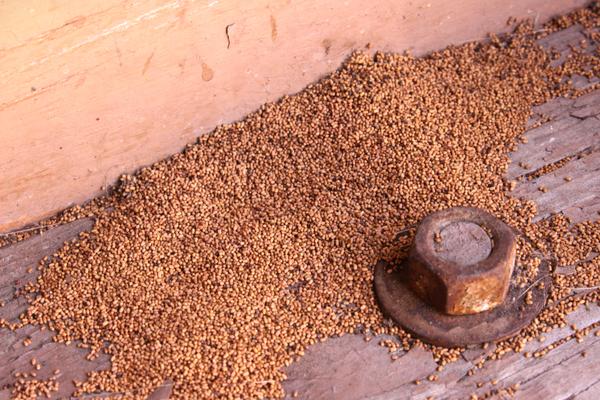Termites are the most common and destructive wood pest in North America. According to the National Pest Management Association, they cause over $5 billion in property damage every single year. Subterranean termites (like the especially common Eastern subterranean termite) feed 24/7 once they infest a building. Worst of all, property insurance doesn’t cover termite damage! Generally, nobody thinks about pests until they absolutely have to. We don’t blame you! Unfortunately, this doesn’t really work for termites. You really don’t want to have to live through a termite infestation to learn how to handle them. We recommend learning a thing or two about termites now, instead. Here’s what you should know about termites to keep them away from your home for good.
When is termite season?
Unfortunately, this is something of a misnomer. Though flying, reproductive termites swarm in spring, the colonies themselves can remain active all year. Instead of slowing down the way some other pests might in the fall, termites may ramp up their tunneling activity. In cool weather, the pests burrow deeper into soil and wood in order to stay warm all winter. As long as they stay warm, they can keep working. As long as they keep working, they keep threatening your home. Termite infestations rarely begin in winter, but they can begin in fall. During fall, they seek out moist, decaying wood they can burrow through easily. They’ll tunnel into this wood until it can protect them from frost. If termites manage to get inside your home’s structure before winter, they won’t stop chowing down on it all year. Termites may also break off into “satellite” colonies once established. These satellite colonies will need more food sources and inflict more damage.
How can I tell I have termites?
You can find several signs of termite infestation both in and outside your home. When termites feed on wood, they hollow it out from the inside. Wood the pests feed on is more likely to splinter, crumble, or break away entirely. When the wood breaks it may look pulpy or softer than it should. Termites also produce wood-colored droppings called “frass” as they feed. You may find frass at the entrance of termite tunnels, or at various points along wooden structures. Outside, “mud tubes” are the telltale sign of termite infestation. Termites never leave the cover of their tunnels unless it’s absolutely necessary. Instead of going out in the open to access wood, they’ll often build mud tunnels up to it. These dirt tunnels often wind along home foundations from the ground to wooden structures. Mud tunnels are more common outside, but they can build their tunnels inside, as well.Why did termites attack my house?
Termites are attracted to wood that’s easily accessible, moist, or rotten, or damaged. The easier it is for them to begin chewing through it, the more appealing the wooden structure. Moisture, in particular, is a primary consideration because eating wood is thirsty work. Plumbing leaks, improper yard drainage, or high humidity can all attract termites to your home’s wood. Termites tend to attack wooden structures near the ground, at least at first. Rotting wood is easy to chew through because it’s not as resilient as healthy wood. Termites can bore through rotting wood faster and establish more elaborate tunnel systems in less time. The faster they spread, the faster they inflict damage. Often, termite colonies start in wooden structures that aren’t directly connected to your home. They’ll establish themselves in a rotting stump, firewood, or your shed first. Then, they’ll attack your home when they need more food and space.






